Asparagus Risotto
Risotto...With Asparagus
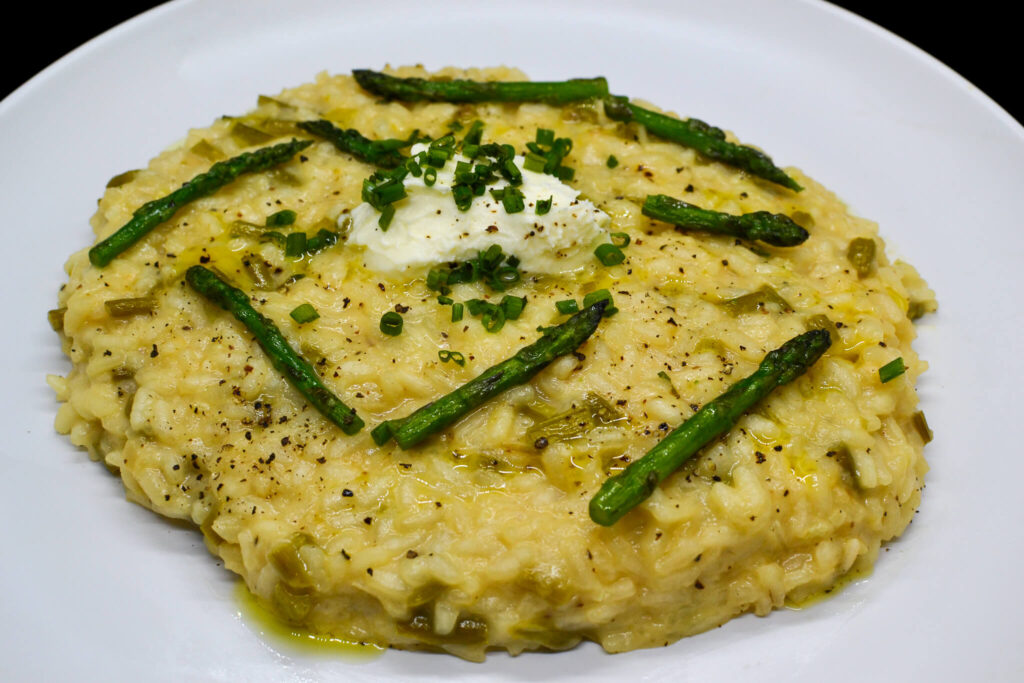
What Is Asparagus Risotto?
Asparagus risotto is a traditional Italian dish from Northern Italy. It’s made by cooking rice with broth until creamy and adding asparagus. This dish became popular because it’s easy to make and uses fresh, local ingredients like asparagus, a common spring vegetable.
Ingredients For Asparagus Risotto
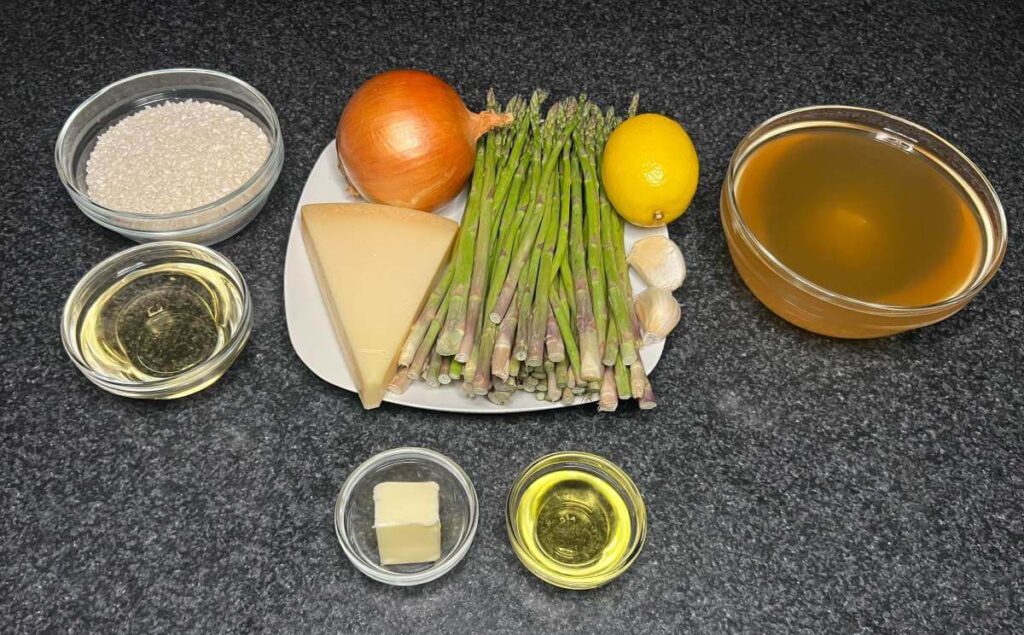

Produce
1 Pound Asparagus
1 Lemon
1 Sweet Onion
2 Cloves of Garlic
Refrigerated
1/2 Cup Parmesan Cheese
2 Tbsp Butter

Grocery
2 Cups Arborio Rice
3/4 Cup White Wine
4 Cups Vegetable Stock
4 Tbsp Olive Oil

Spices
1/2 tsp Salt
1/2 tsp Black Pepper
How To Make Asparagus Risotto
Step 1
Prep & Cook Asparagus
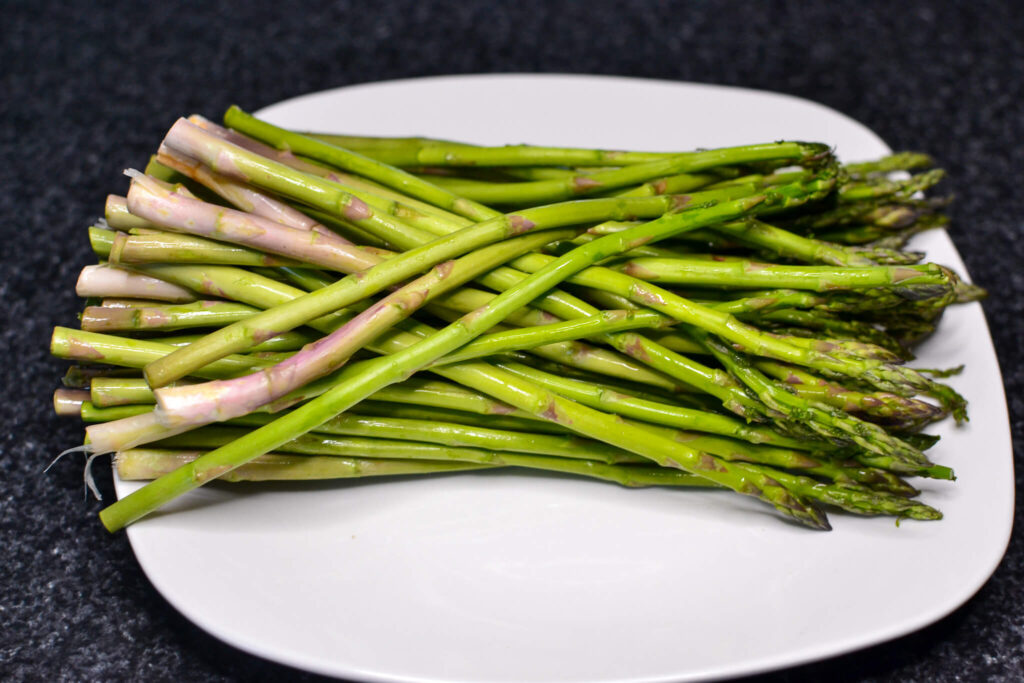
Selecting quality asparagus is crucial for this dish. Look for firm, brightly colored stalks that feel heavy for their size, as these are indicators of freshness and good flavor. Asparagus is not only a key ingredient in our recipe but also a nutritious spring vegetable with a rich history.
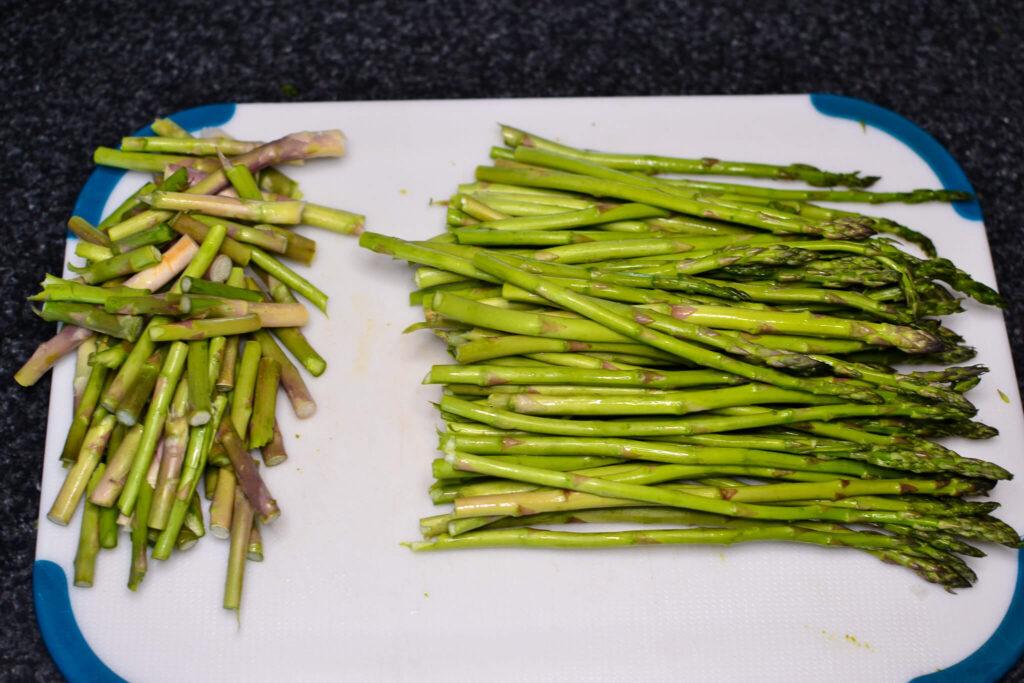
Begin by trimming off the woody bottoms — the dry, tough ends that snap naturally where tenderness begins.
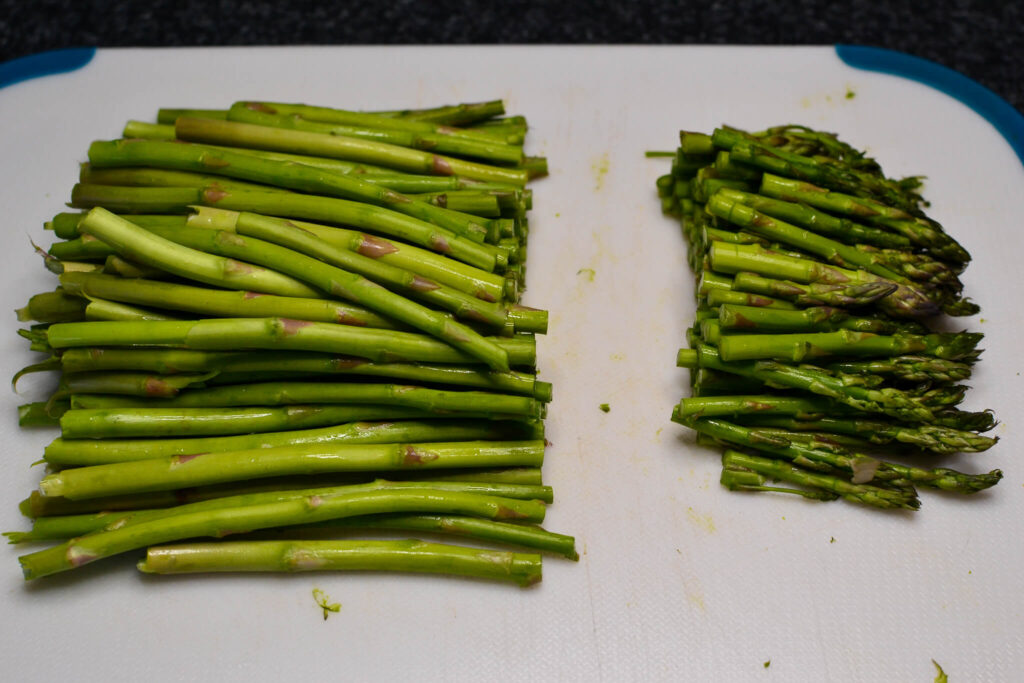
Remove the tips and set them aside for later; they’re delicate and will finish cooking at the end for the best texture and color.
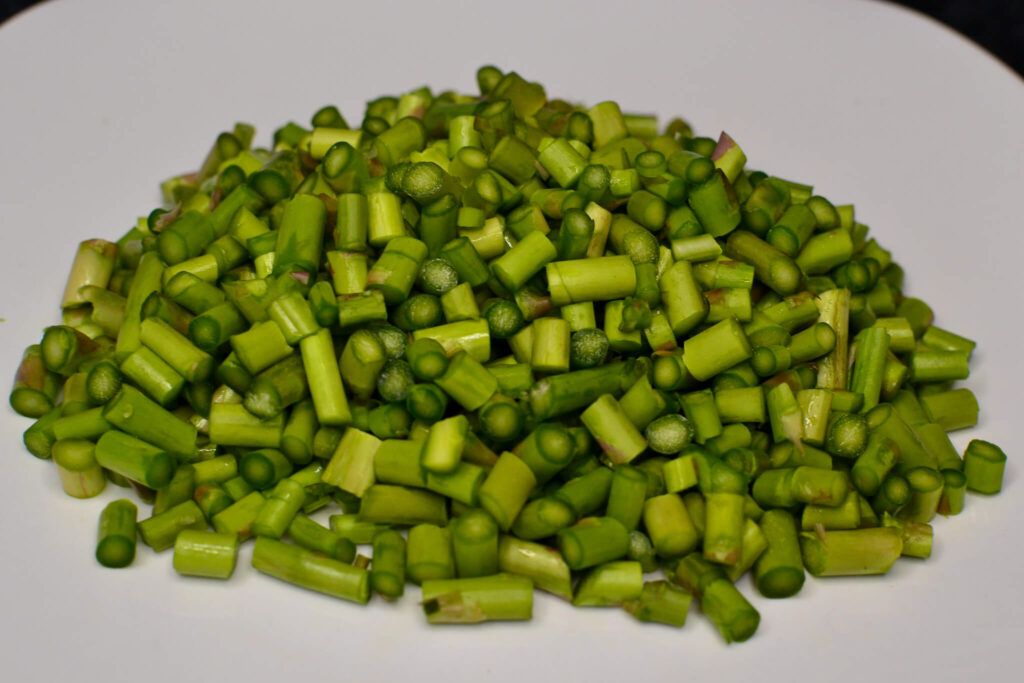
Chop the remaining stalks into bite-sized pieces, about 1-inch sections, which ensures even cooking and better distribution throughout the risotto.
Step 2
Prep & Cook Onions/Garlic
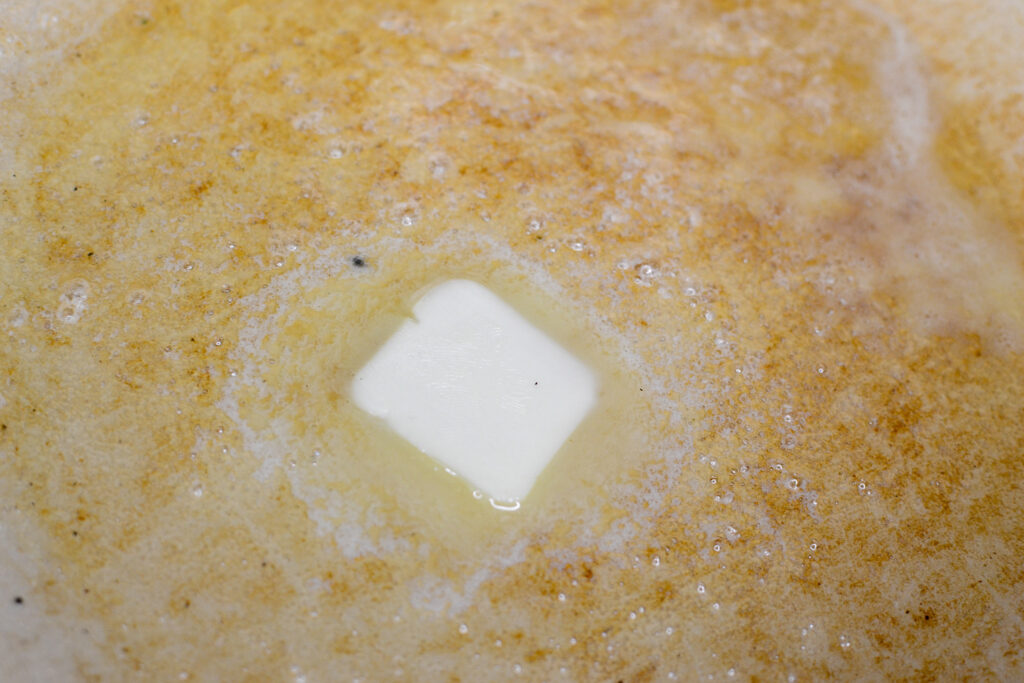
Using the same pan, add more butter and olive oil. This layering of flavors is a fundamental principle in cooking, creating a rich base for the other ingredients.
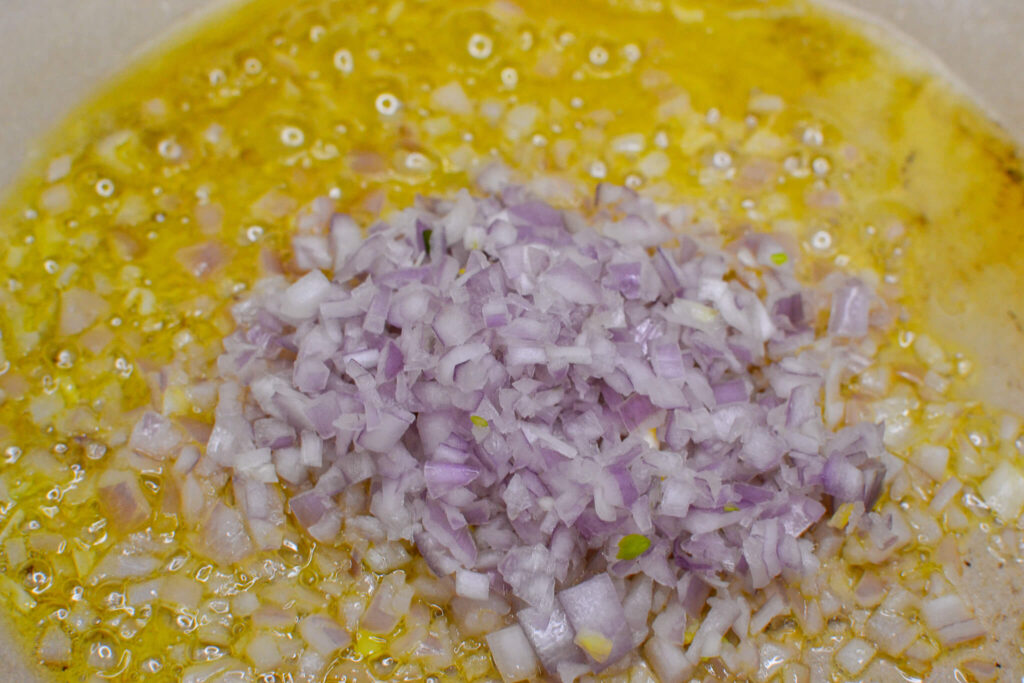
In a large pan, heat olive oil and a bit of butter over medium heat. Add finely minced shallots and sauté until soft and translucent, about 3–4 minutes.
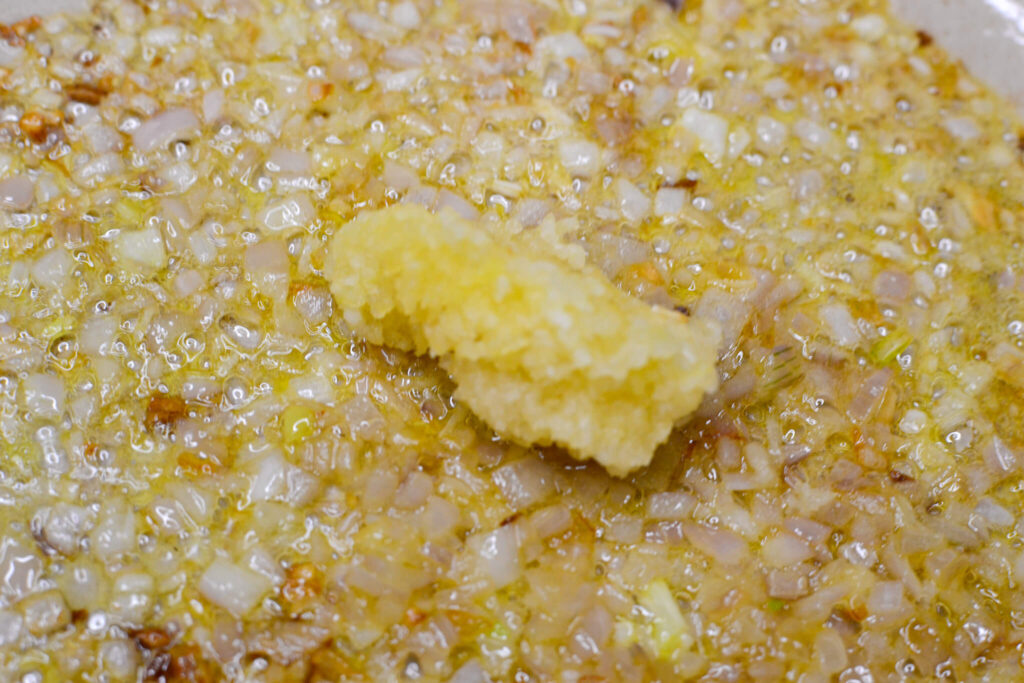
Add minced garlic and cook for about 30 seconds, just until fragrant. The shallots provide a sweeter, more delicate base than onion, perfect for letting the asparagus shine.

This combination of shallots and garlic builds the foundational layer of flavor that infuses every bite of the risotto. By sweating them gently without rushing, you allow the aromatics to soften and sweeten, setting up a perfectly balanced backdrop for the richness of the rice, cheese, and asparagus to come.
Step 3
Cook Rice & Add Liquids
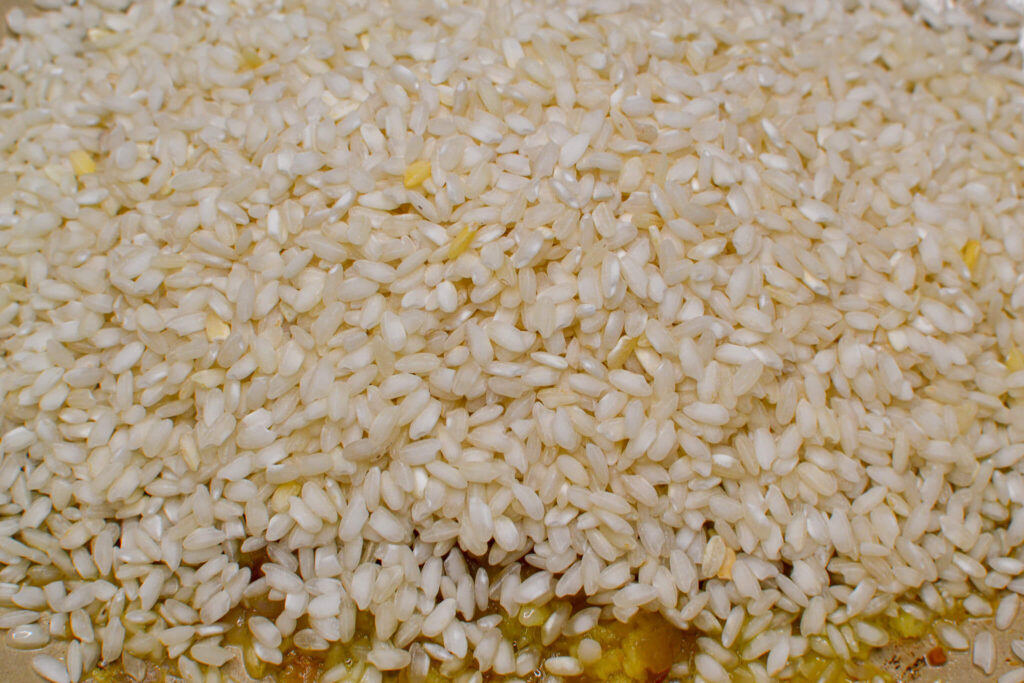
Now, let’s focus on the risotto itself. Start by toasting the Arborio rice in the same pan where you cooked the onions and garlic. This step is crucial as it coats each grain in the flavorful base, adding depth to the dish.
Arborio rice, a staple in Italian cuisine, key for making traditional risotto. It comes from the Arborio area in Italy and is known for its short, fat grains and lots of starch, mainly amylopectin. This is what gives it a creamy texture when cooked.
Arborio rice’s special feature is that it can soak up liquids and flavors but still keep a firm, chewy middle, called ‘al dente’ in Italian cooking. The mix of creamy texture and a bit of bite is what makes a good risotto.
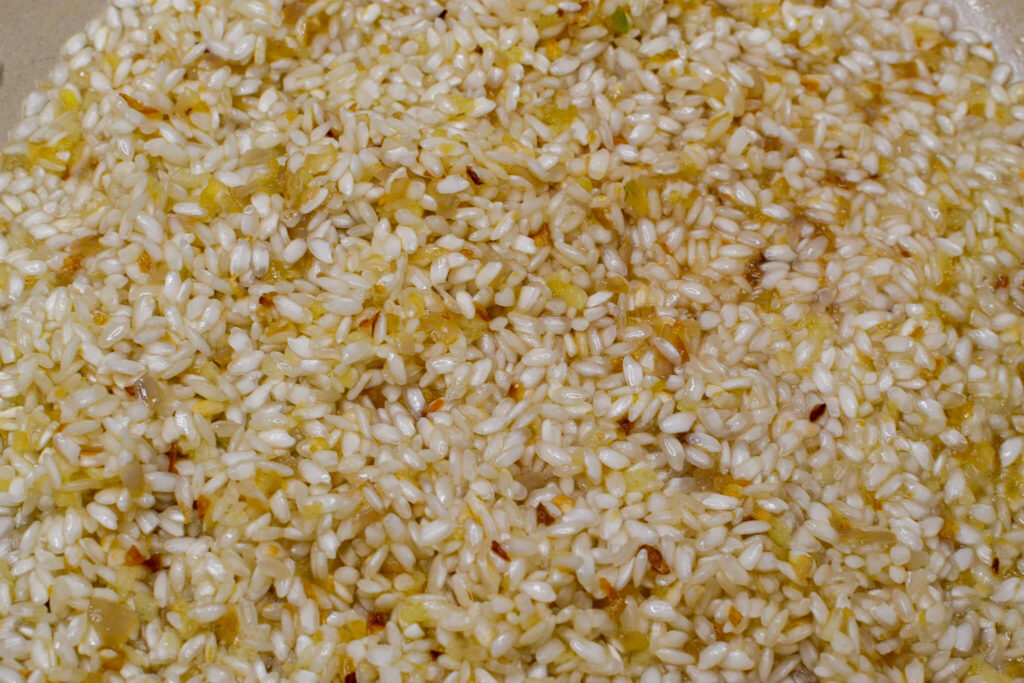
When you cook Arborio rice, it slowly lets out its starch, making the liquid around it thicker and giving risotto its creamy texture. This happens more when you cook risotto by slowly adding warm broth to the rice, letting each grain soak up the liquid and release starch.
Then, pour 3/4 cup of white wine into the rice. The wine adds a light acidity that improves the risotto’s flavor. Wait for the rice to completely soak up the wine before you add anything else. This not only fills the rice with the wine’s scent but also makes it better at absorbing the broth later.
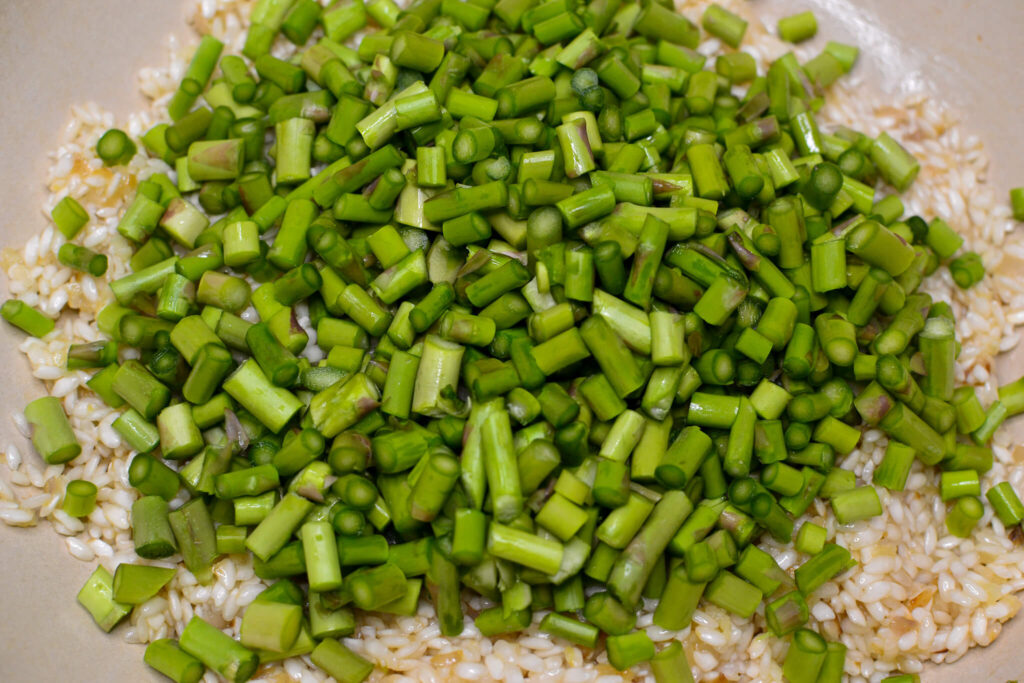
Right after the rice is lightly toasted, stir in the chopped pea-sized asparagus stalks. Adding the asparagus at this stage allows it to cook slowly along with the rice, infusing the risotto with fresh, green flavor from the inside out. Cutting the asparagus into small, pea-sized pieces ensures it cooks evenly and blends seamlessly with the creamy rice without becoming mushy or overcooked.
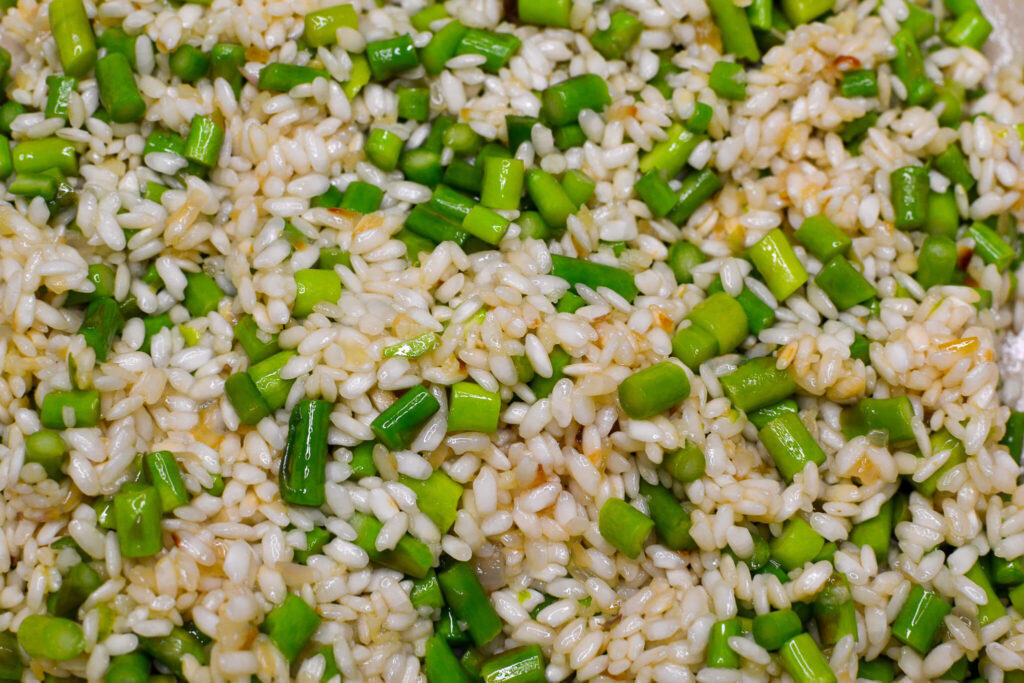
Once the asparagus is incorporated, deglaze the pan by pouring in the white wine. Stir gently and let the wine absorb completely — this step adds a light acidity that balances the richness of the butter and Parmesan you’ll add later.
With the wine absorbed, begin adding warm chicken broth one ladle at a time. Stir gently and consistently, letting the rice absorb the broth slowly. Chicken broth brings a richer, deeper savory flavor to the risotto compared to vegetable stock, creating a more luxurious base without overpowering the delicate asparagus.
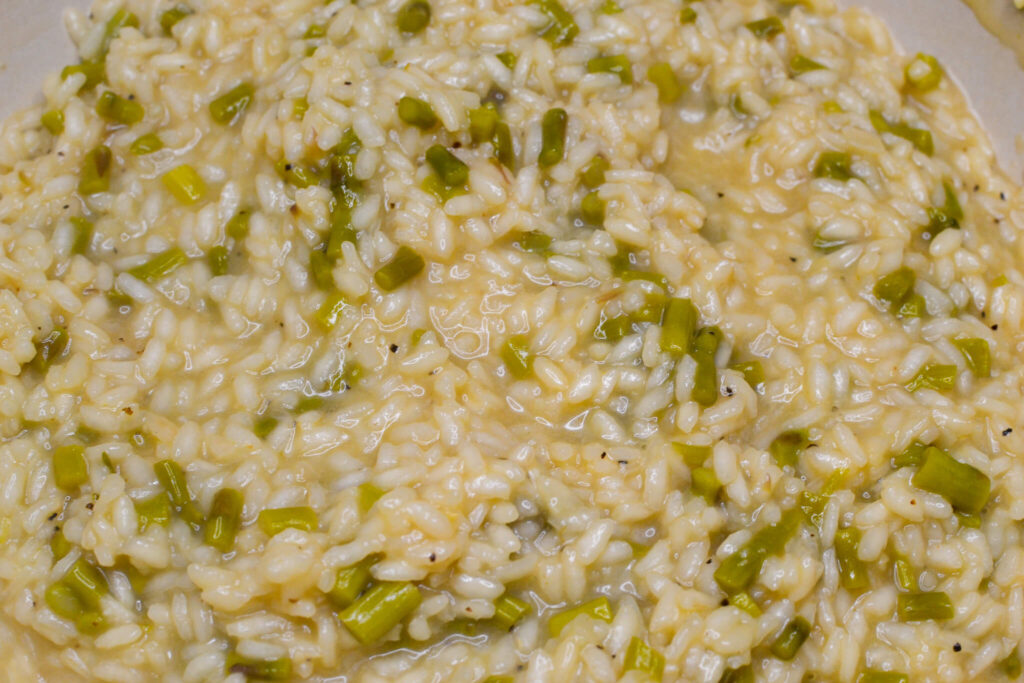
Continue this gradual process, adding broth and stirring, until the rice is tender and creamy, about 18–20 minutes.
Step 4
Add Cheese, Lemon & Finish
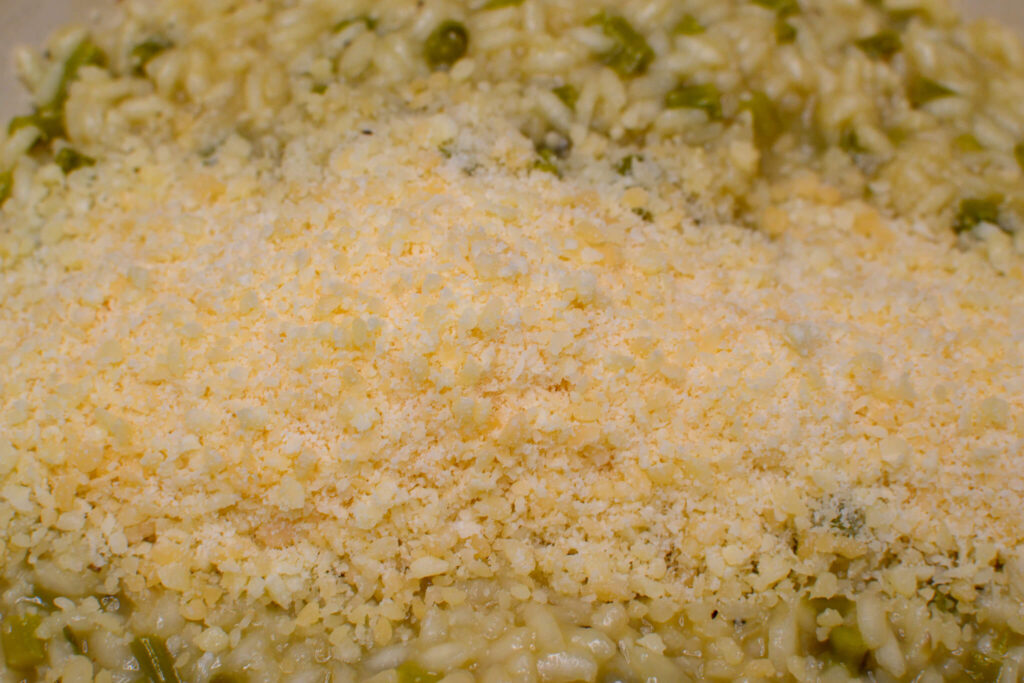
Off the heat, immediately stir in the Parmesan cheese. Freshly grated Parmesan melts into the risotto, creating a rich, nutty base that amplifies the dish’s savory flavors. Parmesan is essential for risotto — it brings a subtle umami depth and a luxurious creaminess without overwhelming the asparagus. Stir it in vigorously to help it fully melt and emulsify with the rice and broth.

After the cheese, add a knob of cold butter (about two tablespoons). This classic finishing technique, known as mantecatura in Italian, is what gives risotto its final silky, glossy texture. The cold butter emulsifies into the hot rice, locking in creaminess and adding a luscious, rich mouthfeel to every bite.
Finally, brighten the dish with fresh lemon. Add about two tablespoons of fresh lemon juice to the risotto and, for extra brightness, a few swipes of lemon zest. The lemon adds acidity and freshness, balancing the richness of the butter and cheese, and perfectly complementing the grassy flavor of the asparagus. Stir gently to incorporate, tasting as you go — you can always add more lemon juice or zest if you prefer a little extra zing.
Step 5
Enjoy Your Asparagus Risotto!

Now for the final touches:
Drizzle good-quality olive oil over the top for a rich, peppery finish.
Arrange the sautéed asparagus tips on top for a bright, tender bite.
Add a dollop of mascarpone cheese right in the center — it slowly melts into the warm risotto, adding extra creaminess and an indulgent finish.
Sprinkle with finely chopped fresh chives for a pop of color and a mild oniony bite.
Finish with a few grinds of fresh cracked black pepper to bring everything together.
The result is a dish that’s not only creamy and rich but also layered with freshness, brightness, and a bit of elegance on the plate.
Enjoy!

American Beauty

Inspiration
“Can Someone Please Pass The Fucking Asparagus?” – Lester Burnham

More About Asparagus Risotto
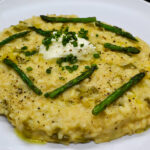
Asparagus Risotto
Ingredients
- 1 pound Asparagus
- 1 Lemon
- 1 Sweet Onion
- 2 Garlic Cloves
- 1/2 cup Parmesan Cheese
- 2 tbsp Butter
- 2 cups Arborio Rice
- 3/4 cup White Wine
- 4 cups Vegetable Stock
- 4 tbsp Olive Oil
- 1/2 tsp Salt
- 1/2 tsp Black Pepper
Instructions
Prep & Cook Asparagus
- Trim and chop 1 pound of asparagus into bite-sized pieces.
- Sauté the asparagus in butter and olive oil for 3-5 minutes, then season with salt and pepper. Set aside.
Prep & Cook Onions/Garlic
- In the same pan, sauté the chopped sweet onion in butter and olive oil until soft and translucent. Add minced garlic and cook for 1 minute until fragrant.
Cook Rice & Add Liquids
- Add the Arborio rice to the pan, stirring to coat the grains.
- Pour in 3/4 cup white wine and let it absorb.
- Gradually add 4 cups of warm vegetable stock, one ladle at a time, stirring constantly until the rice is creamy and cooked, about 15 minutes.
Add Cheese & Lemon
- Stir in 1/2 cup Parmesan cheese, 2 tbsp butter, and 2 tbsp lemon juice.
- Add the cooked asparagus back into the risotto. Adjust seasoning with salt and pepper.
Enjoy Your Asparagus Risotto
- Serve warm and garnish with extra Parmesan if desired. Enjoy the rich, creamy flavors of your homemade risotto!
This dish has its roots in the rich culinary traditions of Northern Italy. The story of risotto begins with the introduction of rice in Italy, likely brought over by the Arabs during the Middle Ages. It found a perfect growing environment in the humid and water-rich regions of Northern Italy, especially in Lombardy and Piedmont.
Over time, Italian cooks mastered the art of risotto, a method of cooking rice that highlights its natural starches. This technique involves slowly cooking short-grain rice, like Arborio, in broth until it achieves a creamy consistency, perfectly balancing tenderness and bite.
The incorporation of asparagus into risotto is a testament to Italian cooking’s emphasis on seasonal and fresh ingredients. Asparagus has been valued since ancient times, both for its distinct flavor and nutritional benefits. In Italy, the arrival of spring brings fresh, tender asparagus to the markets, signaling a perfect time to blend this vegetable with creamy risotto.
As a result, this dish became a popular dish that combines creamy rice with fresh asparagus. This dish showcases the Italian way of cooking, which focuses on simple, high-quality ingredients and using what’s in season.

